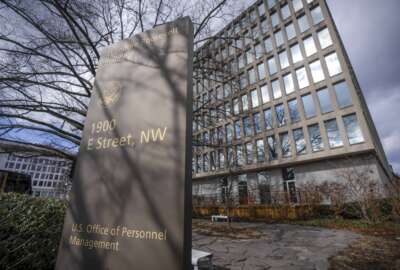VanRoekel’s legacy as CIO highlighted by digital services, PortfolioStat
Steve VanRoekel's decision to move out of the federal chief information officer's role and to a more operational role at the U.S. Agency for International...
Steve VanRoekel’s decision to move out of the federal chief information officer’s role and to a more operational role at the U.S. Agency for International Development last week caught most by surprise.
But after spending more than three years as the federal CIO, many experts surmised VanRoekel’s decision was as much about stepping into a new fray as it was he probably needed a change.
Few people last too long in any of the top jobs at the Office of Management and Budget. It has been called by many previous OMB officials the hardest and most demanding job they’ve ever loved.
The rumor mill was fairly strong that VanRoekel has been looking to make a move over the last year or so. Sources say he was hopeful for a larger role in the administration, whether it was deputy director for management at OMB, a deputy secretary or assistant secretary for management type of position or something similar.
But when that didn’t materialize, VanRoekel’s decision to jump into the Ebola fray is a logical move for many reasons.
In some ways, VanRoekel’s decision harkens back to the move by Dee Lee, going from administrator of the Office of Federal Procurement Policy to a career position where she was the head of the Defense Department’s acquisition policy. But the difference is VanRoekel remains a political appointee as the chief innovation officer at USAID.
VanRoekel replaces Maura O’Neill, who left USAID in August 2013 after spending more than 3-1/2 years as chief innovation officer and senior counselor.
“It is admirable that Steve has chosen to devote his knowledge and skills to assist the government’s response to the Ebola outbreak in Africa,” said Trey Hodgkins, senior vice president of the public sector at the Information Technology Alliance for Public Sector (ITAPS). “The U.S. response and the victims of this disease will benefit tremendously from his commitment, and we applaud and thank him for his continued public service.”
So what will VanRoekel be remembered for as the fourth federal CIO?
Most experts in the federal technology community agreed his legacy will be a good one, but well behind his three predecessors.
One former federal CIO, who requested anonymity because they now work in the private sector, said VanRoekel’s legacy is highlighted by the Digital Government Strategy and the path it set the government on over the last two years.
But the former federal IT official said VanRoekel and OMB didn’t drive implementation as aggressively as some would have liked. Additionally, VanRoekel didn’t have a grand vision or a transformative strategy to move government IT forward fast enough, as is usually expected from the federal CIO.
Another area of frustration was around VanRoekel and the White House’s lack of support for CIO authorities and the Federal IT Acquisition Reform Act (FITARA).
One industry source said VanRoekel may have had his hands tied due to the administration’s stance when it came to fixing the structure problems with the CIOs’ position.
“He could have made the case more strongly in the White House that FITARA or something similar was needed,” the source said.
Others credited VanRoekel for the impact PortfolioStat has had on how agencies now view and manage IT investments across mission areas.
“Through PortfolioStat, the work Steve did with agencies to move to better managed technology projects through the consultation with industry and across government is what led to some of the ideas that went into Digital Services Playbook and TechFAR,” said Dan Chenok, executive director of IBM’s Center for the Business of Government. “He’s helped raise the general level of capacity to do IT programs across the government. He was certainly instrumental in supporting GSA’s 18F and most recently the Digital Services Group to help agencies address technology challenges.
Mike Hettinger, senior vice president for public sector at TechAmerica, said VanRoekel was effective behind the scenes when working with industry.
“He did a lot of sit downs in small groups with all of industry represented and was very effective in small settings understanding our concerns and challenges,” he said. “He was very open talking about ideas he had like Digital Services Group and the TechFAR.”
Now the rumor can begin about who will step into the federal CIO role. No one expected VanRoekel’s name to be called when President Barack Obama nominated him, and a lot of the obvious candidates have left government over the last two years — Dave McClure, Roger Baker and Richard Spires.
The White House could leave deputy administrator for e-government and IT Lisa Schlosser in the interim role for the next two years considering the next person would need to get Senate confirmation, which easily could take six to nine months, thus leaving them only 15 months in the role.
“The current makeup of OMB’s E-Gov is undergoing significant change,” said a senior government IT manager, who requested anonymity because they didn’t get permission to speak to the press. “Steve is back in USAID, and Scott Renda, who was the Federal Data Center Consolidation Initiative’s backstop, has taken a position with the private sector in Washington State with Amazon. The next two years might be steady as she goes with an indeterminate sense of direction.”
Chenok said the next CIO should be someone who can come in and quickly pick up the agenda that’s in process. The person should identify two or three priorities of their own that can be accomplished in a short window.
Spires, the former DHS CIO and now CEO of Resilient Network Systems, said the next federal CIO needs “to bring leadership in driving the government toward more consolidation of its infrastructure through use of cloud and shared services, and focus on continuing to improve the ability to successfully deliver IT programs that support improved mission outcomes.”
Hettinger added the next CIO needs to be someone who understands technology and acquisition, and the growing intersection of the two.
“A lot of what is going on inside government between the Digital Service Group, GSA’s 18F and things like the TechFAR. The next CIO needs to understand technology and acquisition all fits together properly,” he said.
No matter who ends up as the next federal CIO, VanRoekel is leaving them with solid foundational capabilities around digital services, and a growing maturity around IT investment and project management.
Copyright © 2025 Federal News Network. All rights reserved. This website is not intended for users located within the European Economic Area.
Jason Miller is executive editor of Federal News Network and directs news coverage on the people, policy and programs of the federal government.
Follow @jmillerWFED






